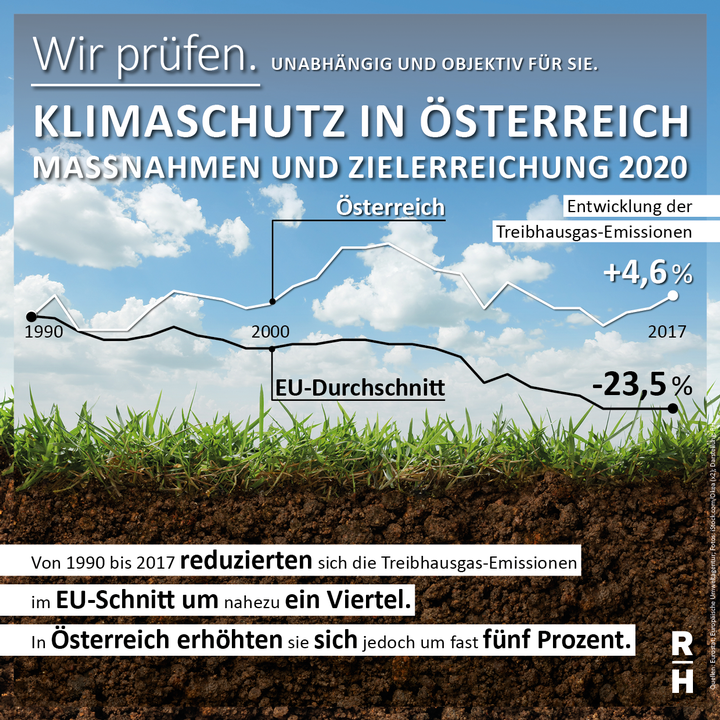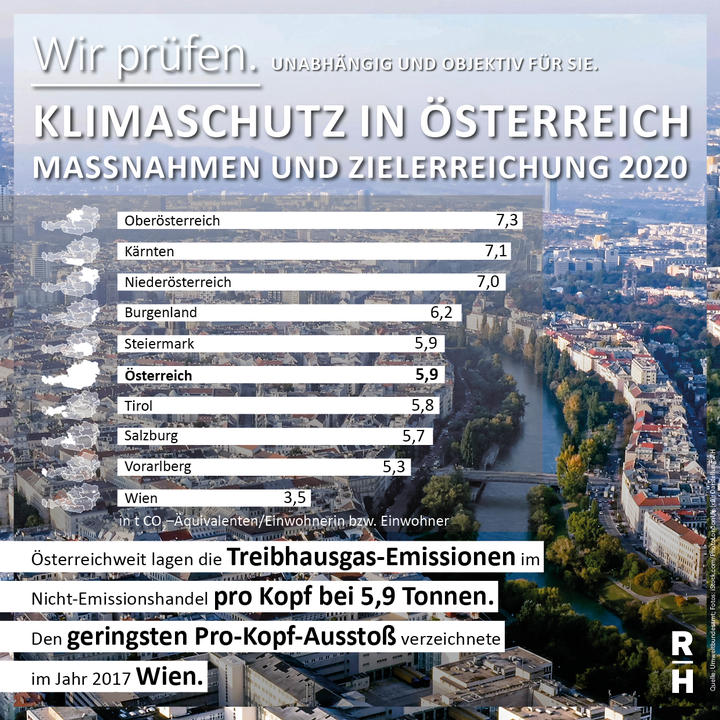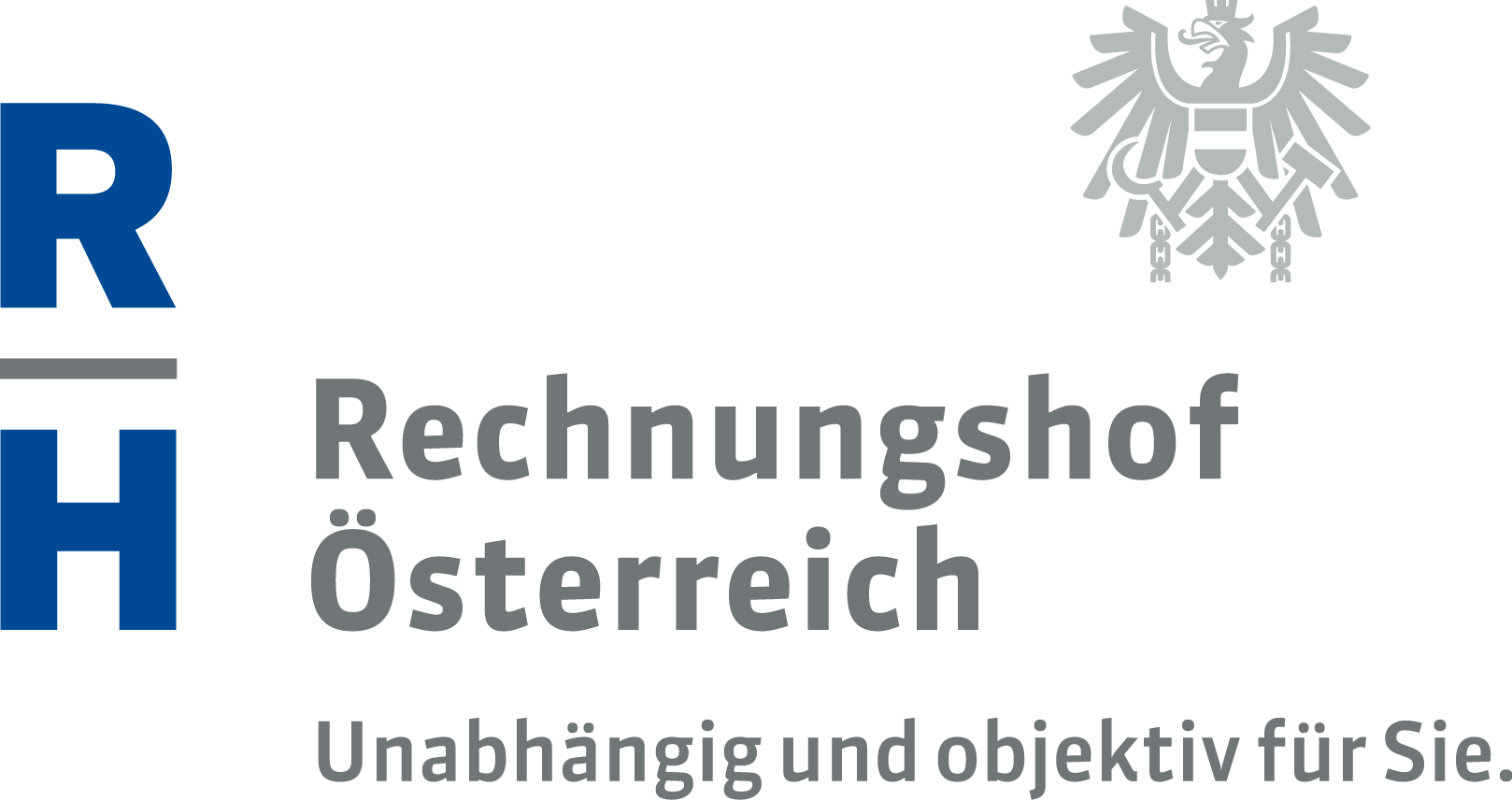Climate protection is not centrally coordinated in Austria

Actions related to climate protection are not centrally coordinated in Austria, which renders the implementation of effective climate protection measures difficult. This is revealed by the auditors of the Austrian Court of Audit (ACA) in their report "Climate Protection in Austria – Measures and Target Attainment 2020“. Especially in the transport sector, Austria is failing to reduce greenhouse gas emissions. From today’s perspective, Austria will clearly miss the EU’s 2030 climate targets. Consequently, compensation payments for the purchase of emission certificates accounting for up to EUR 9.214 billion are to be expected. Climate change is already creating macroeconomic costs of one billion euro per year in Austria. The ACA audited the climate protection measures in the non-emissions trading sector. The audited period spanned the years from 2015 through 2019.
The need for central monitoring and reporting
Due to fragmented competences as regards climate protection, there is a need for increased cooperation and coordination – also with the provinces. Furthermore, partly conflicting interests of the ministries hinder the introduction of rapid and effective measures. Although budget responsibility lies within the respective responsible ministries, coordination with the Federal Ministry of Finance is necessary. The ACA recommends to improve the cooperation between the competent federal entities as well as between the federal government and provinces and to implement adequate processes in the interest of an all-encompassing management responsibility for climate protection measures. Moreover, there is a need for central monitoring and reporting in order to be able to quickly react to developments.
The ACA also sees room for improvement as regards the National Climate Protection Committee, an advisory body for fundamental questions on the Austrian climate policy. A clear task profile is missing. It is also unclear to whom this body has to address its recommendations and to what extent such recommendations are binding.
Forest fires, natural disasters and macroeconomic damages
In Austria, the temperature in 2018 was more than two degrees Celsius above the pre-industrial level. The increase in temperature was twice as high as the global average. This resulted in an increased risk of forest fires and natural disasters such as floods and mudslides. Global warming is caused by the emission of greenhouse gases. While greenhouse gas emissions decreased by an average of almost a quarter in the EU from 1990 to 2017, they increased by five per cent in Austria during the same period. Austria was one of six EU states that did not reduce greenhouse gas emissions during this period.
With a total of 51.5 million tons of CO₂ equivalents in 2017, Austria exceeded the maximum amount of greenhouse gas emissions stipulated in the Climate Protection Act (Klimaschutzgesetz) for the first time, namely by about 1.3 million tons; compared to the limit value stipulated in EU law, even by about 2.1 million tons.
The irreversible consequences of climate change also have far-reaching macroeconomic implications. The weather- and climate-related costs of global warming in Austria currently average one billion euro per year. By the middle of the century, the societal damage will amount from about EUR 4.2 billion up to EUR 5.2 billion per year. Should the temperature rise more sharply, this amount would increase to EUR 8.8 billion.
Transport as the main cause

Transport is the main source of greenhouse gas emissions in the non-emissions trading sector in Austria. 47 per cent in 2018 – i.e. almost half – are attributable to this sector. This is due to increased fossil fuel sales and the higher performance of passenger cars, buses and trucks. Since 2014, Austria has continuously failed to reduce greenhouse gas emissions of the transport sector. A trend reversal towards a sustainable reduction of emissions has not been achieved.
For the period of 2015 to 2018, the federal government and the provinces had committed to the “Second Action Programme” (“Zweites Maßnahmenprogramm”) according to the Climate Protection Act. When this programme was drawn up, effective proposals for reducing greenhouse gases in the transport sector were put forward. However, despite the fact that the suggested measures – such as raising the mineral oil tax, extending speed limits and greening the commuter tax – were approved by the provinces’ representatives, they were not included in the final programme.
Enormous costs for emission certificates
For the audited period, the EU's binding 2030 climate targets envisaged for Austria a reduction of greenhouse gas emissions in the non-emissions trading sector by 36 per cent compared to 2005. In its long-term strategy, the European Commission set itself the goal to reduce emissions by 80 to 100 per cent by 2050 compared to 1990.
Based on the mandatory measures implemented so far, Austria would clearly miss the 2030 and 2050 climate targets. In 2027, a first calculation of the total emissions at the EU level will be carried out for the period of 2021 to 2030. According to a statement issued by the Federal Ministry of Finance, costs in the four-digit million range are to be expected in any case. Based on calculations made in the framework of a study in Germany, Austria would incur expenses of about EUR 4.607 billion to about EUR 9.214 billion for the purchase of emission certificates in the above-mentioned period, any additional climate protection measures excluded. These costs would have to be borne by the federal government and the provinces at a ratio of 80 to 20.
The ACA recommends to develop a timely strategy for the purchase of emission certificates. The currently envisaged distribution of costs among the provinces based on the population key does not provide a financial incentive to make more ambitious efforts to implement climate protection measures compared to other countries. It would therefore be necessary to work towards a polluter-pays regulation of the distribution of costs for the possible purchase of emission certificates between the federal government and the provinces.
- pdf Datei:
- 4,412.9 KB
- Umfang:
- 128 Seiten
Report: Climate Protection in Austria – Measures and Target Attainment 2020 (in German)
From October to December 2019, the ACA audited the climate protection measures in Austria. The audit focused on the attainment of the 2020 climate targets on the federal level and, as examples, in the provinces of Lower Austria and Upper Austria.


